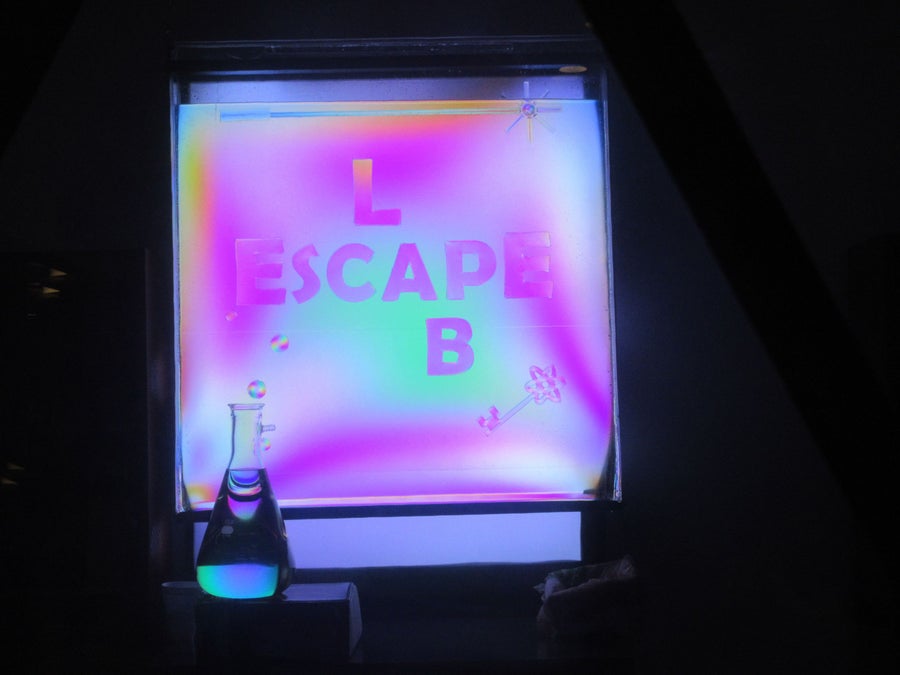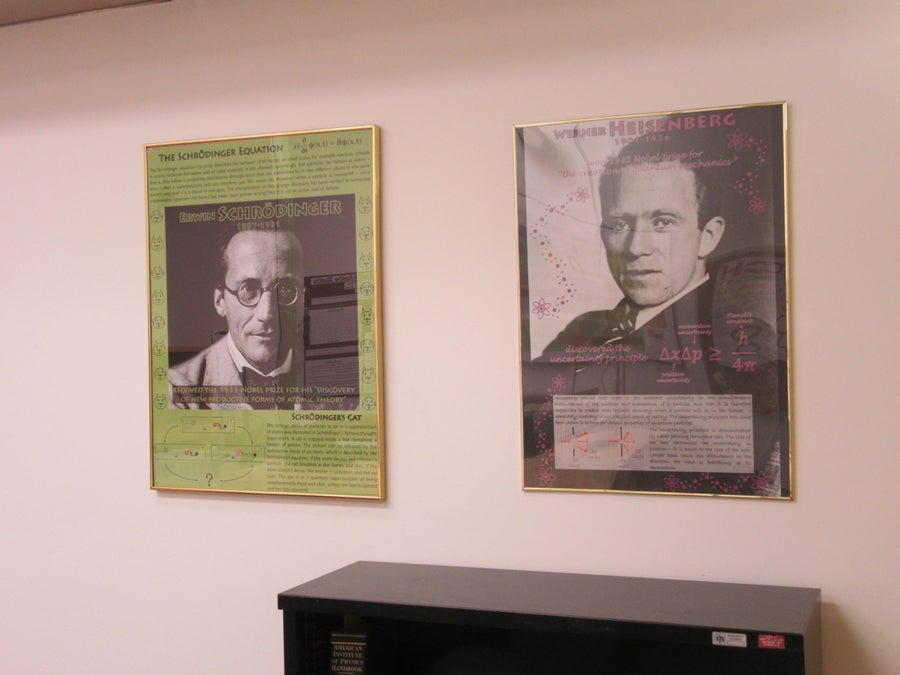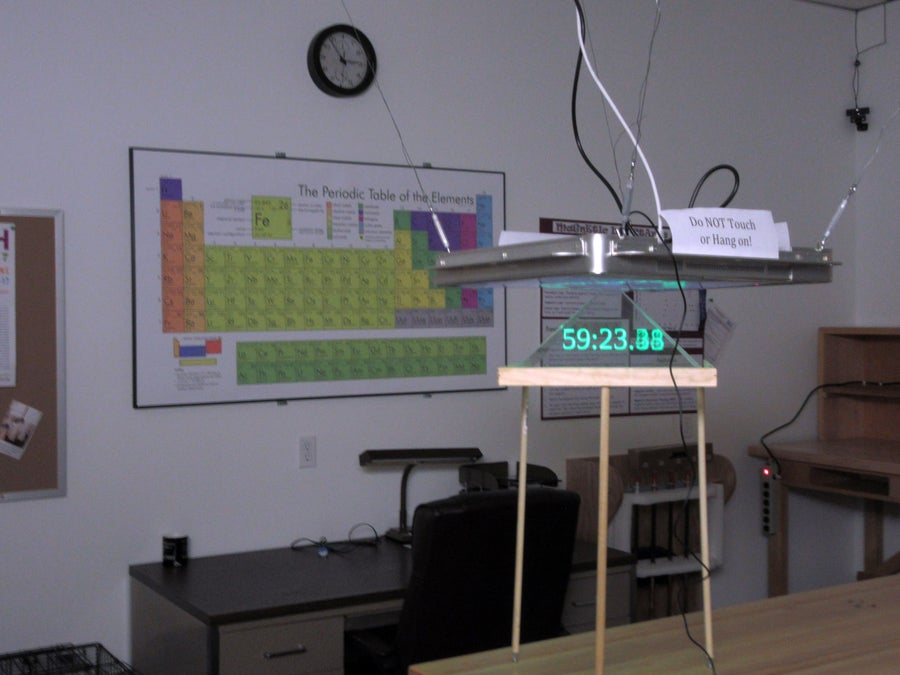If your idea of a good time is locking yourself in a room with half a dozen other people hell-bent on solving puzzles in order to get out, look no further than the growing worldwide phenomena of “escape rooms.” These games challenge players holed up in tight quarters to use logic and creativity to solve “crimes,” defuse “explosive devices” or, in one case, flee a hungry “zombie” chained to the wall. But those terrifying scenarios have nothing on one of the newest: a mystery that challenges players’ ability to learn and apply physics.
The LabEscape room, which opened last week at Lincoln Square Mall in Urbana, Ill., centers on the disappearance of Professor Schrödenberg—a fictional University of Illinois physicist and expert in carbon nanotube research who vanishes after developing a top secret quantum computer that can crack any digital security encryption code in the world. The backstory says previous groups of special agents assigned to find Schrödenberg have disappeared while investigating the professor’s secret lab, where the game begins.

Chiral corn-syrup molecules polarize light, in a tank with the LabEscape logo. Credit: Paul Kwiat
On supporting science journalism
If you're enjoying this article, consider supporting our award-winning journalism by subscribing. By purchasing a subscription you are helping to ensure the future of impactful stories about the discoveries and ideas shaping our world today.
LabEscape is the brainchild of Paul Kwiat, a University of Illinois at Urbana–Champaign physics professor who took on his first escape room about a year and a half ago and has been hooked ever since. Kwiat’s goal in creating LabEscape over the past year has been to develop a fun way of demonstrating to people that physics is relevant to their daily lives, and that science and art are not as far apart as some may think. But this is not easy. “Associating an escape room with science puts us at a disadvantage, because people often see science, and physics in particular, as an impenetrable black box to be feared,” Kwiat says. People’s fears of zombies help fill movie theaters and drive top TV series—but science phobia tends to make people tune out.
A few escape rooms have computers, but the game mostly attracts “players eager to look at something other than a glowing screen,” Scott Nicholson, a professor of game design and development at Wilfrid Laurier University in Ontario, wrote in a 2015 paper on the emerging phenomenon. “Escape rooms require teamwork, communication and delegation as well as critical thinking, attention to detail and lateral thinking.”

Posters of physicists Edwin Schrödinger and Werner Heisenberg contain vital clues. Credit: Paul Kwiat
Clues can often be found by studying artwork on a room’s walls, and by searching through boxes and desk drawers. This often turns up keys, codes or symbols that lead players to their next clue. LabEscape players have to solve a series of hands-on puzzles and problems covering various areas of physics including optics (Kwiat’s specialty), magnetism and electrical conduction. The story line of Schrödenberg’s disappearance involves quantum physics but, sadly, Kwiat was unable to incorporate single-electron interference or quantum entanglement into his escape room. He says he does hope to add a version of the famous theoretical Schrödinger's cat experiment that would play on the quantum quandary known as superposition—in which an object exists in two or more states at the same time (simultaneously alive and dead, in the case of the hapless thought-problem feline).
Kwiat and his LabEscape team—which includes fellow Fighting Illini physics professor Tim Stelzer, the physics department’s director of information management Rebecca Wiltfong and several students and volunteers—are already planning a second room that will open this summer and serve as a sequel in Professor Schrödenberg’s saga.

Players have one hour to solve all of the puzzles and discover the fate of Prof. Schrödenberg. Credit: Paul Kwiat
Kwiat does not want to let the cat—Schrödinger's or otherwise—out of the bag by describing LabEscape’s challenges in too much detail, but he does have some general tips: Players, he says, should work in groups of two or three so they can tackle multiple puzzles at once. And they should designate a central spot in the room where they share all of the most relevant information they have acquired, he says. An additional bit of advice—come to any escape room with a sense of curiosity as well as a willingness to collaborate and communicate, Kwiat says. “All three of those,” he notes, “are essential for good science.”
